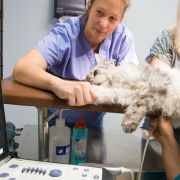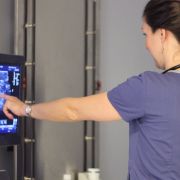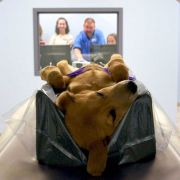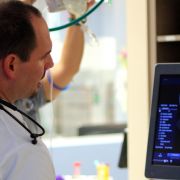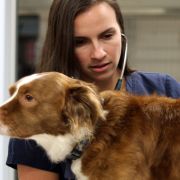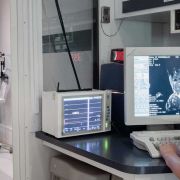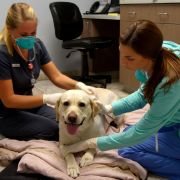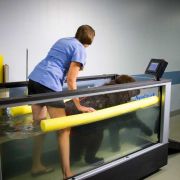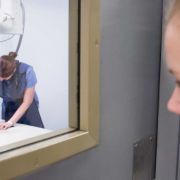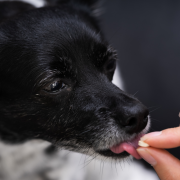Date:
CHARLESTON, SC (WCSC) - Click for Video
A rare neuromuscular disease most often found in humans is now turning up in dogs, veterinarians say.
Two-year-old Goldendoodle Joy is a burst of happiness and personality and her owners, Lois and Ed Rinehimer, absolutely adore her .
"Joy is Joy she fits her name perfectly,” Lois says.
Just a year ago, Joy was not able to get around as much because of a disease called Myasthenia Gravis (MG). Dr. Catherine Crook with Charleston Veterinary Referral Center diagnosed Joy with the disease, which effects the nervous system in about 1 in 1000 dogs.
"Its a disorder that is a problem between the transmission of signal between the nerves and the muscle and that signal basically gets interrupted,” Crook says.
For Lois and Ed, it meant taking Joy on a morning walk would take a lot longer and Joy's ability to do basic things would be altered.
"She was walking stiff legged and when I would take her out for walks she was kind of dragging and she would walk and stop,” Rinehimer says.
Not only were joys walks difficult it was also hard for her to get up the stairs.
One of the tests that positively diagnosed Joy with having MG was a simple blink reflex test in the inner corner of her eye.
"So if I tap the dogs eye she should blink when I did that to joy and I would tap five or six times her eye would stop and tire and that was a sign,” Crook says.
Crook says Myasthenia Gravis is usually found in young adult dogs ages one to four or older pets. The disease is also most common in German Shepherds, Labradors, Akitas, and Golden Retrievers. The disease not only can affect the nerves and muscles in a dog's legs but their face and throat as well.
"If the disease really progresses untreated they can fatigue so much that they can’t breathe,” Crook says.
With treatment including therapy Joy continues to get better every day and has been on medication for close to a year now.
"We started Joy on medication which increases the signal from the nerves to the muscles and she has responded well to the medication,” Crook says.
Joy is back to the things she loves like taking walks and fetching her favorite toys and playing with the grandkids.
"We're taking her on mile-plus walks and she’s playing,” Rinehimer says.
Not only do the Rinehimers credit Crook for diagnosing their dog so quickly, they also were thankful for having pet insurance. They say the pet insurance helped offset the cost of treatments which saved them thousands of dollars in the long run.
Copyright 2015 WCSC. All rights reserved.








